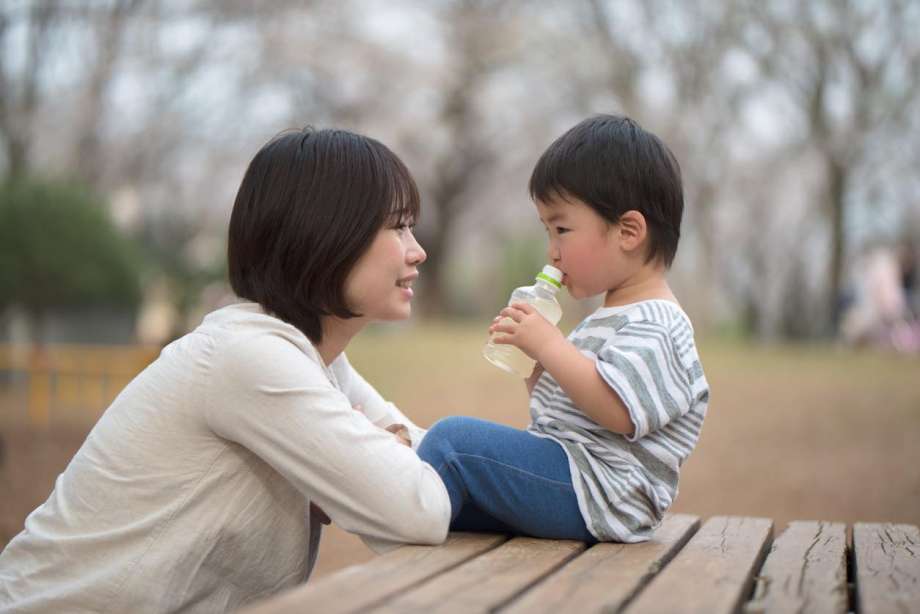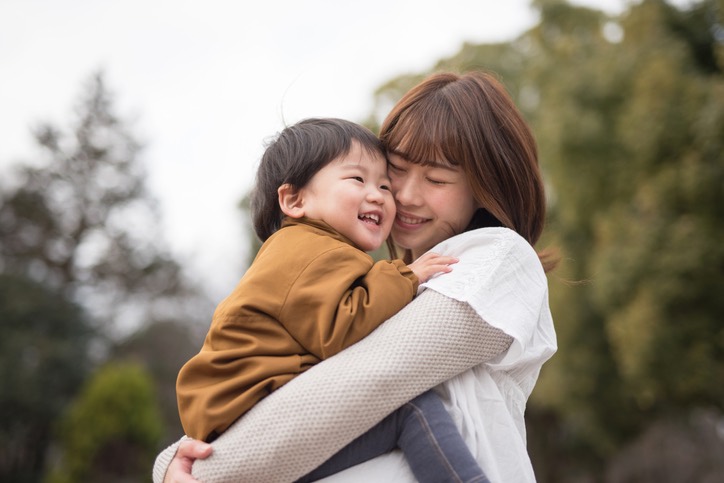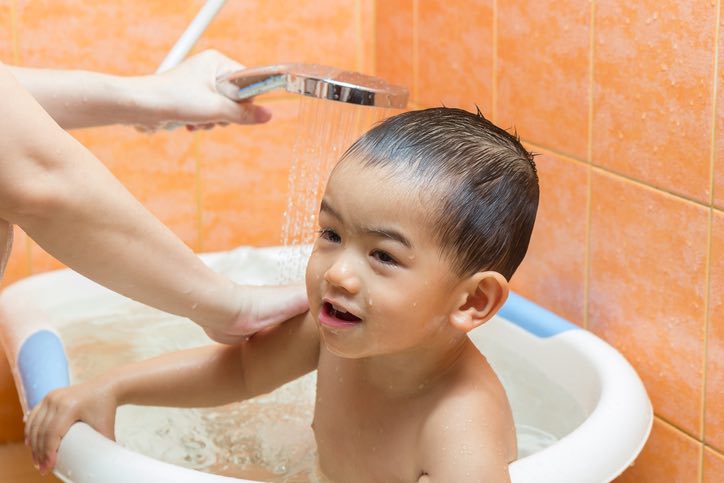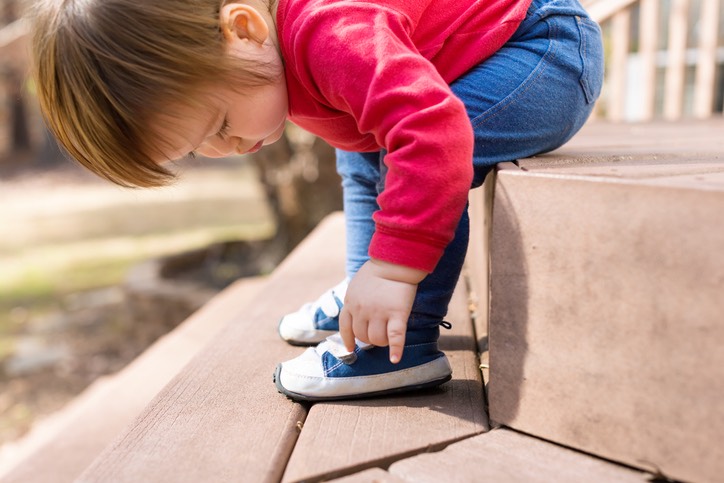My Son Is Only 2 But I’m Already Teaching Him About Consent

When we hear the word consent, we often think about research studies, medicine, law, or sexual relationships. These are areas that children aren’t directly involved in so it may not seem appropriate to talk about consent with them.
However, experts agree that children should learn about consent as early as preschool so they can build healthy relationships with others and their bodies.
Here’s why, and how, I’m teaching my two-year-old son about consent.
Consent in the Everyday
We’re at a family dinner when my son throws himself on his older sister and gives her a tight squeeze. She screams “no” and starts crying; however, everyone around us is gushing over how cute these siblings are.
I immediately separate them. I get down on my knees and tell my son,
“She doesn’t like that. Remember you need to ask first.”
There’s dead silence in the room. I look up and confidently run over to my daughter to console her.
Empowerment and Safety

Teaching consent isn’t only about understanding what it means to permit something to happen. Teaching children about consent as young as 2 years old can help build their foundational knowledge of body autonomy.
Body autonomy is the right and ability to govern the choices of our bodies without violence, fear, emotional manipulation, social pressure, or physical force from others. It helps keep children safe from inappropriate touches as it empowers them to take control and ownership of their bodies.
It promotes a safe learning environment because it allows children to make respectful decisions and requests when it comes to hugging, playing games, participating in activities, and physical interactions. There is a mutual understanding that everyone has a right to decide how they want their bodies to engage with others.
Here’s how I’m teaching my son (and all my children!) to respect his boundaries as well as the boundaries of those around him.
1. I Use the Correct Terms for Body Parts
In our household, my kids know the anatomical terms for their genitals. We don’t use weewee, weenie, pee-pee, willy, or jay-jay. In my opinion, when slang is used for private parts, it can create a sense of shame about them. I don’t want my children to feel embarrassed about their bodies, penises, testicles, urethras, vulvas, labia, and vaginas included.
Giving them the correct terminology allows them to talk openly about their body parts with us and their medical provider, minimizing any confusion. And if they experience any unwanted touches, they’ll have the words to describe what happened.
2. I Teach Him How to Wash His Genitals

When they’re babies, they’re not able to wash themselves. However, once my children reached an age where I could give them simple instructions to follow, I started to teach them how to take care of their bodies.
During bathtime, I will ask for permission before washing them. “Is it okay if I wash your back? What about behind your ears? And your armpits?”
Then when it comes to their genitals, I’ll hand them the washcloth and let them clean those parts themselves. When we first tried this, they didn’t know what to do so I asked them to watch me while I did it. Then I let them try. After a couple of bath sessions, they were able to do it on their own.
3. I Let Him Choose How to Dress

My son is a determined child who constantly tests his independence by doing things by himself. By the time he was able to give me yes or no answers, I started giving him choices about his outfits. For instance, I will have two shirts in my hands and I’ll ask him to choose one to wear.
He’s slowly learning to dress himself but his style, personality, creativity, and preferences are already showing. I want my kids to develop a strong sense of self so they feel confident expressing themselves without worrying about what others think. It’s their body so it’s their choice.
4. I Talk About Different Ways to Express Emotions
I teach my kids other ways to show affection that do not involve hugs or kisses. These include blowing a kiss, giving a high five, a handshake, a fist bump, an elbow bump, or a simple wave and smile. I also encourage them to use their words to express their love and care. They have learnt to use the following phrases:
“I love you lots and lots.”
“I missed you so much.”
“I’m so happy to see you.”
“I’m excited to spend time with you.”
“I can’t wait to see you again.”
5. I Practice Being My Child's Advocate

At gatherings and outings with friends and families, I do not expect my children to hug or kiss anyone they don’t want to. This includes tickling, pinching cheeks, getting picked up and tossed, or any other interaction that involves touching. I respect their choices and act as their advocate; reinforcing to others that it’s kind to respect their decisions.
I don’t worry about the judgment of others, or whether they think we’re being rude or disrespectful. All that matters are my children’s well-being and fulfilling my duty as their trusted caregiver to keep them safe from harm. I don’t care whether it’s their Grandma, Grandpa, or aunt who hasn’t seen them in months; if my child says no, that’s final. No means no.
I’ll step in front of my child and politely say, “Maybe we’ll hug and kiss another time.” Then I’ll look at my child and ask, “How would you like to greet Auntie? A wave, high five, or some nice words?”
6. I Try to Lead By Example
Lastly, I’ve found that the best way to teach a child something is to model the behavior. Imagine being told to eat your veggies but you see everyone else eating chips and candy. It’s hard to follow what you’re told if the person telling you doesn’t practice what they’re preaching.
So whenever I’m about to hug my child or pick them up, I’ll watch for signs of whether they want my embrace. When they tell me to stop tickling or cuddling, I stop. I don’t get mad, angry, upset, or disappointed. I don’t guilt-trip them into giving me physical affection. I respectfully give them the space that they’ve asked for.
It's never too early to bring up this topic with our children. The focus is to ensure they have the appropriate information, answering the questions that their curious minds have so that they feel comfortable bringing up issues if or when they do.

